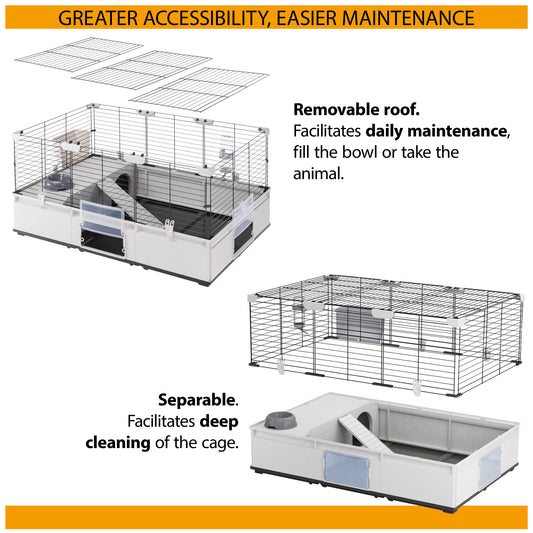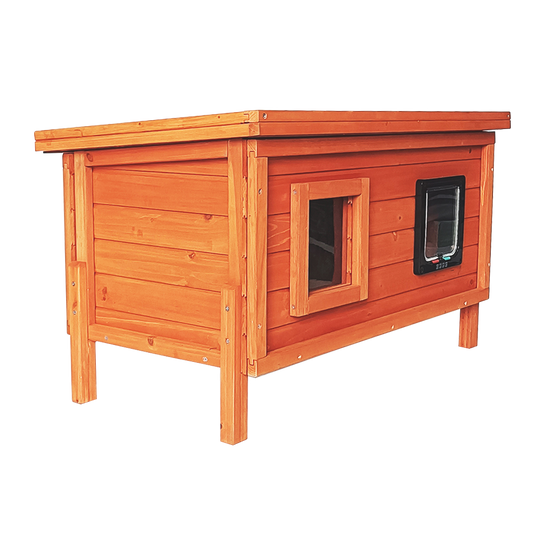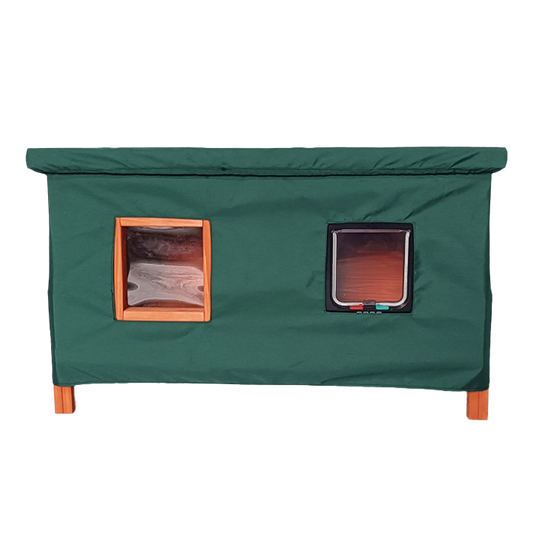It wasn’t until the invention of the cat litter tray in the 1940s that owners were able to choose to keep their pets indoors permanently. Research by Nottingham Trent University in 2021 revealed as many as 41% of cat owners keep their pets exclusively indoors – the majority citing concerns over safety as the main reason why. Pet theft and increasingly busy roads in urban areas have made cat owners think twice about giving their pets free reign of the neighbourhood – but is it good for them to be shut indoors all day?
There are pros and cons to a life solely spent indoors and ultimately it is a decision that needs to be made with an individual cat in mind. You need to decide which approach is likely to be best for your own cat’s welfare. Here are some things to think about:
Indoors Only
It is a fact that cats kept indoors tend to live longer than those that spend time outdoors. This is due to being exposed to fewer hazards and being less likely to pick up contagious viruses from other cats. However, a long life does not necessarily mean a happy one and not all cats are suited to being behind closed doors.
The Animal Welfare Act 2006 (England and Wales) makes it an owner’s legal responsibility to ensure that a pet is able to exhibit normal behaviour patterns, and for cats this includes climbing and hunting. Provision will need to be made for indoor cats to enable them to fulfil their natural instincts, but fortunately there are lots of products that can help here – such as toys that encourage ‘hunting’ and climbing.
There are some cats who are more at risk outdoors than others, such as those with disabilities affecting their senses or mobility. In these situations, a cat would be much safer being kept indoors. If you live in a high-rise flat or in a property with no access to a safe outdoor space it might be too dangerous for your cat to go outside.
A kitten or young cat who has not previously experienced the freedom of the outdoors will be happier confined to home if that’s all they’ve ever known. It is less likely that an outdoor cat will be happy if they suddenly find their freedoms restricted. If a cat can see exciting things going on through the window, or spies garden intruders that they are unable to chase away, they can become stressed or depressed.
If you decide to keep your cat indoors, you have to be vigilant with doors and windows so your cat can’t slip out unnoticed. This means keeping your windows and doors shut in the summer or using some kind of guard so your cat can’t get through. It can be dangerous if an exclusively indoors cat finds themselves suddenly in the big wide world as they won’t have learned the necessary street knowledge. If they’ve not experienced traffic or other neighbourhood animals before, they could find themselves in a lot of trouble.
Cats are independent and territorial by nature so if you have more than one cat, they will each need quite a large area to call their own. If you don’t have enough room indoors for each cat to have sufficient space, you could end up with cat fights in the home.
Outdoors
The freedom to roam the neighbourhood will appeal to a cat’s natural independent streak. They are solitary animals and tend to prefer their own company, unlike dogs who are social animals. Some urban areas have a particularly dense population of cats and this can be a problem when they start defending their territories. Even if you allow your cat free reign during the day, it is a good idea to keep them in at night. That way they are less likely to get caught up in fights or injured on the roads when they are less visible.
Road traffic accidents are a big issue in some built-up areas and it appears that those most at risk are young cats with no road sense. Research carried out by Rochlitz at the University of Cambridge in 2003 found that cats between seven months and two years of age were at highest risk of being involved in traffic accidents. Male cats are also 1.9 times more likely to be involved in road accidents than female cats.
Cats who are allowed out have larger, more varied environments to explore, which means more exercise. Therefore, outdoors cats are much less likely to become obese compared to their indoor-dwelling counterparts.
There have been cases of cats being stolen or being intentionally harmed, so if you know there has been a spate of incidents in your local area you may wish to keep your cat in. Talk to other cat owners who live nearby when judging how safe it is for your cat to be out.
Have I Made the Right Decision?
If you weigh up the pros and cons and decide that your cat would be better off living exclusively indoors, how can you tell if they are happy or not? Signs that an indoors cat is thriving include:
- Fulfilling their natural instincts by ‘hunting’ toys, using scratching posts, climbing, and interacting with their environment.
- Being interested in what’s going on around them – this could be watching the world go by through the window or even watching television.
- Seeking affection, meowing and purring contentedly.
- Eating and drinking well.
- No problems using a litter tray.
There are lots of ways you can enrich indoor life so that your pet doesn’t miss out on the best bits of being a cat. Cats Protection has a great guide on meeting the needs of indoors cats. You can download it from: cats.org.uk/help-and-advice/home-and-environment/indoor-cats.
Shop All Cat
If you found this interesting, why not read:









